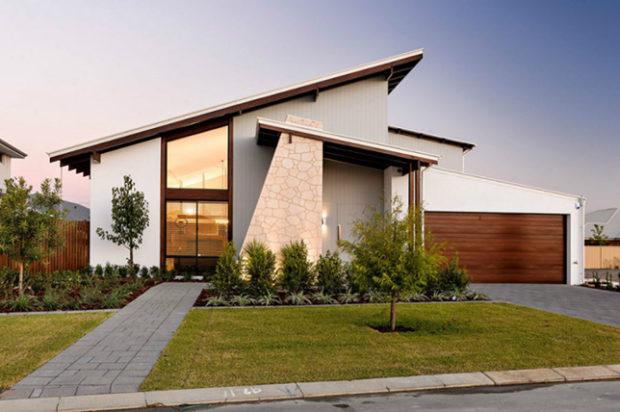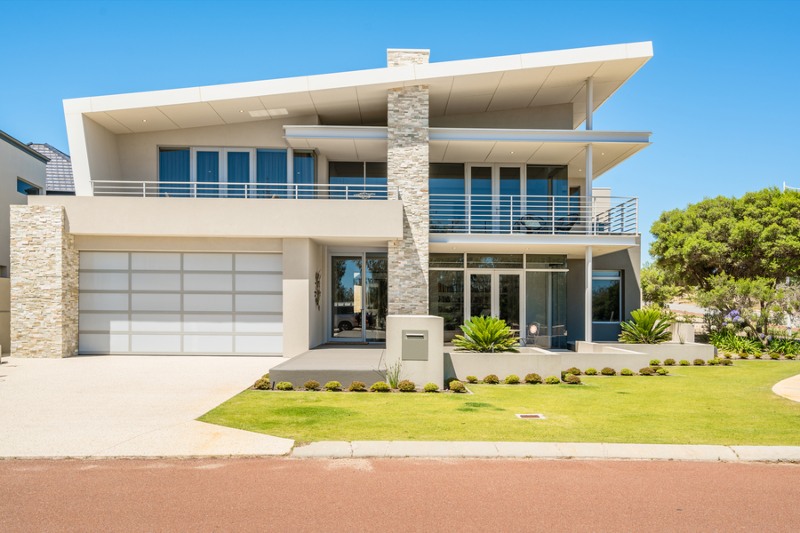
When you think of building a house, you may not realize the importance of roof design. Many think of a roof as a practical way to protect your family and home from the weather. However, adding some inventive architectural features to your roof will give your property a competitive advantage over the other houses in the neighborhood.
Who doesn’t appreciate a home built with elegance and beauty? The easiest way to attain this is through your roofing design. This article will show you some of the most attractive and modern architectural roof ideas.
Table of Contents
The Butterfly Roof
With triangle roofing systems and vertically oriented brick fireplaces, the butterfly roofing system transformed classic English-style real estates such as the comfortable home and Middle Age Tudor-style dwellings. Postwar American modernism had an essential role in the natural design evolution that underpins mid-century architecture and the butterfly roofing system. Butterfly roofing is a few key developments from this era that is still an essential part of the recognition of mid-century modernism today.
A butterfly roofing system is a V-shaped roof that resembles a butterfly. This type of roofing system has two portions that slope downward and meet at the center of the structure. When viewed from the front, the roofing system resembles a butterfly’s wings, making this type of roofing an appealing and popular alternative for many people worldwide.
Hipped Roofing
A roof with no vertical ends slopes upward from all sides of a structure, and the hip is the exterior angle formed by the meeting of two sloping sides of a roof. The hip level is the degree to which such an angle exists. A hip end is the triangular sloping surface formed by hips that meet at the ridge of a roof. A pavilion roof is hipped evenly at all corners, with the hips meeting at a single peak. Still, the more usual form of a hip roof is above a rectangular structure, with a roof ridge meeting two hips at either end, making it ideal for the best-selling roof hatches in your area.

The Roof of the Parapet
Generally made for temples, castles, and towers, the parapet roof is a wall extension that runs along the edge of a roof, balcony, terrace, walkways, or structure. It is a short, vertical wall that runs the length of any building’s rooftop. And, even though the style has evolved significantly over the years, parapet roofs are still employed in various homes. Parapet roof additions are a safety feature in modern residential structures.
They also give any roofline a stylish, completed appearance. Modern parapets today are designed to resemble a railing around the roofline, providing a great finishing touch that is immensely attractive. Parapet roofs are visually appealing and lend distinction to any structure, but they serve a purpose other than aesthetics. This roof design suits a variety of practical purposes. The parapets were often made of marble back then. This old Roman style was absorbed by Gothic architecture, resulting in the typical castle architecture we
Bonnet roofs have been around siknow today.
Roofs with Bonnets
nce the 1700s. During the period, Poles and Germans used bonnet-style roofing on their greenhouses. These roofs aided in the protection of the plants. Despite their ancient history, Bonnet roofs are still popular, and you will find them on ranch houses, cottages, and mountain retreats.
A bonnet roof has a double slope on all four sides. The lower pitch extends over an open-sided raised porch, is less steep and more angular than the top slope. The roof’s shape provides excellent shade and protection. The roof’s design differs from a conventional mansard roof in that the upper slope is much steeper than the lower slope. Kicked-eaves roofs are another name for bonnet roofs. Kicked eaves are a roof improvement that creates a visor look on the home.
Curved Roofs
A curved roof is a relatively recent style that prioritizes aesthetics above endurance. Whether you want one for its style or because it’s a requirement for the type of building you’re designing, you’ll undoubtedly want to understand more before diving in and starting the construction process.
Curved roofs can replace flat or skillion roofs, allowing for larger inside areas or different stories if height limits are an issue. Furthermore, a curved roof may aid in reducing wind resistance.
Being knowledgeable about architectural design can help you improve the aesthetic of your home, making your house stand out from the rest. If you’re thinking of getting your roof changed after reading this article, make sure to hire professionals to work on it to avoid unwanted damages.
